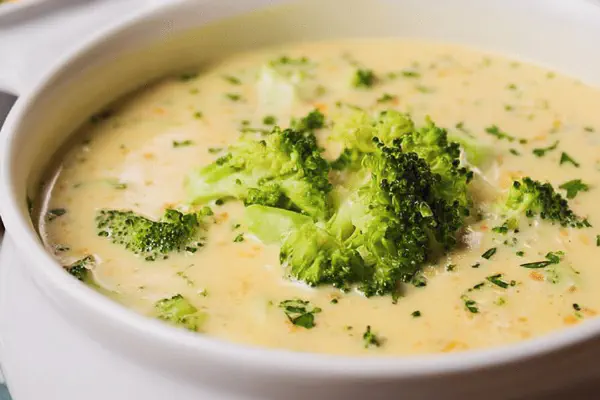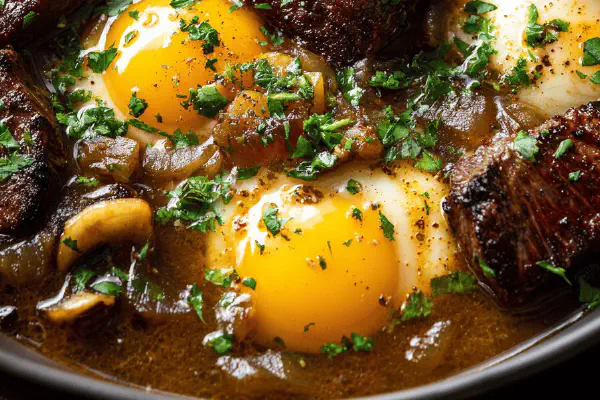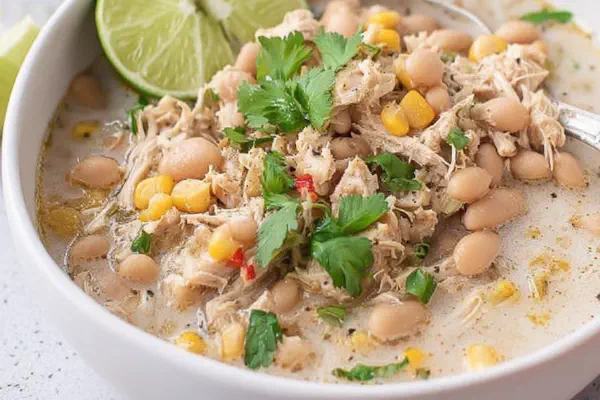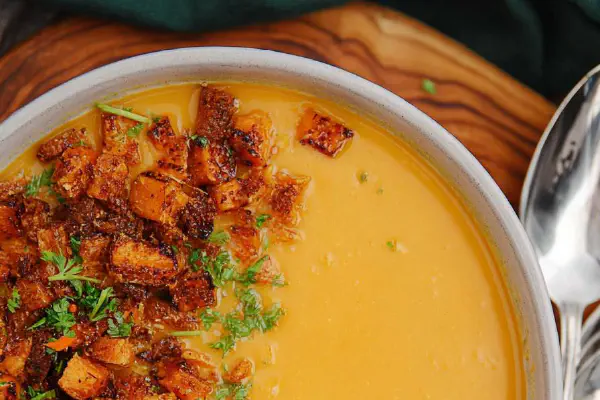Corned Beef Cabbage Soup
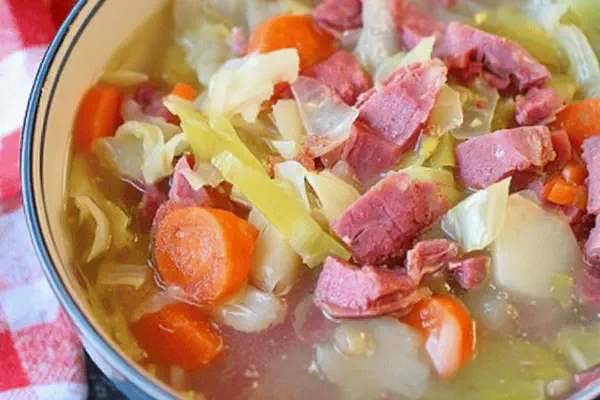
By Emma
Certified Culinary Professional
Ingredients
- 1 tbsp light olive oil
- 1 medium onion chopped
- 1 small parsnip diced
- 1 large carrot diced
- 3 garlic cloves minced
- 6 cups vegetable or chicken broth
- 1 tsp dried thyme leaves
- 1 tsp kosher salt or to taste
- ½ tsp freshly ground black pepper
- 2 bay leaves
- ¾ cup pearl barley rinsed
- 3 cups thinly sliced cabbage
- 1 medium tomato diced
- 2 cups leftover corned beef chopped
- 1 tbsp fresh lemon juice
About the ingredients
Method
- Heat olive oil in large Dutch oven or heavy pot over medium heat until shimmering but not smoking. Toss in chopped onion, parsnip, carrot, and garlic. Sauté, stirring often, 'til onions turn translucent and roots soften but keep bite—about 7 to 8 minutes. Listen for gentle sizzle. Aromas deepen.
- Spoon the softened veggies out into a bowl; don’t fret about brown bits stuck below—they add flavor.
- Pour broth into the pot over the lingering fond and stir, scraping brown patches gently with wooden spoon to incorporate flavor. Add thyme, salt, pepper, bay leaves, and rinsed barley. Bring to a boil then lower to a steady simmer. Lid cracked to avoid over-thickening. Cook until barley starts puffing up, chewy but not mushy, around 35 to 40 minutes, testing halfway.
- Retrieve sautéed veggies from bowl; slide them back into simmering barley broth. Crank heat to medium-high and stir. Watch the broth bubble and steam, veggies re-absorbing flavor and softening further, about 6 to 7 minutes.
- Add sliced cabbage, diced tomato, chopped corned beef, and lemon juice to pot. Stir gently but thoroughly. The cabbage should glisten and begin to wilt within 4 minutes; beef needs just warming through, not stewing. Overcooking ruins texture.
- Remove bay leaves. Taste to adjust salt and pepper. Ladle into warmed bowls. Serve hot with crusty bread or soft potatoes.
- Come back and tweak it—experiment! Leftover mix-ins, more acid, stronger herbs.
Cooking tips
Chef's notes
- 💡 Watch barley texture closely. Should puff up, chewy not mushy. Overcooked barley turns gluey. Lid cracked open keeps steam balance. Stir halfway. Chunks of corned beef diced small heat faster. Big pieces stay cold inside too long. Tomato can be canned diced if fresh is watery or limp. Drain slightly before adding. Cabbage sliced thin to keep bite; throws off color and flavor if mushy. Acid at end brightens soup. Lemon works best, vinegar if no lemons. Bay leaves pull out before serving avoid bitter bites.
- 💡 Sauté timing depends on veggies size and heat. Onion and parsnip soften but keep texture. Listen for sizzling sound that fades a bit, look for translucent onion. Don't rush browning. Brown bits left behind in pot full of flavor; don’t discard. Deglaze with broth gently, scraping fond with wooden spoon. Adds layers and deep aroma. If worried about bitterness from bay leaves, remove early after scent builds. Salt monitoring crucial, cured corned beef has residual salt. Test after all ingredients are combined.
- 💡 Swap oil types for better heat handling. Light olive oil works but avocado or grapeseed oils handle higher temps without flavor interference. Root veggie substitutes possible. Celery root or turnip replace parsnip but taste differs; bitterness possible. If no barley, add white rice near end to avoid mush. More forgiving with timing but different texture. If broth homemade, great base. Store-bought low sodium works but adjust salt carefully. Keep corned beef chunks uniformly sized to heat evenly. Big variation ruins whole texture experience.
- 💡 Visual cues key to judging doneness. Aromas deepen through sauté steps, garlic and onion earthy but sweet. Broth bubbles and steams when barley simmers properly. Watch for glistening cabbage after adding, starts to wilt fast in about 4 minutes. Beef just warms through; avoid cooking longer or beef dries out. Add lemon juice last, brightens but if cooked off loses purpose. Taste after all mixed, adjust seasoning. Ladle with care; plating with crusty bread or soft potatoes rounds off meal nicely.
- 💡 Prep veggies before heating oil; keeps temperature steady and avoids uneven cooking. Timing varies by pot and burner heat. Cook barley uncovered or with lid cracked for best texture. Watch for sticky spots when returning sautéed veggies to broth; stir often to prevent catching. Add cabbage last to maintain color and bite. Experiment with leftover mix-ins, acids, herbs. Keep flavors distinct but merging. Corned beef chunk size and timing changes texture drastically. Bay leaf removal mandatory before serving to skip bitterness.
Common questions
How to avoid mushy barley?
Simmer barley gently with lid cracked. Test midway. Stop when chewy but puffed. Overcooking leads to gluey texture. Stir occasionally. Timing depends on heat and pot size.
Can I swap parsnip?
Yes, celery root or turnip works but watch bitterness. Parsnip gives sweet earth flavor. Adjust cooking times slightly. Avoid substitutes that overpower or change soup profile too much.
What if corned beef chunks are large?
Dice smaller pieces for even warming. Large chunks stay cold inside, texture ruined. Quick warming preserves juiciness. Avoid long cooking after added or beef toughens.
How to store leftovers?
Cool quickly, refrigerate in airtight. Soup thickens in fridge, add broth or water when reheating. Can freeze in portions. Defrost overnight in fridge recommended. Reheat gently to keep texture intact.
